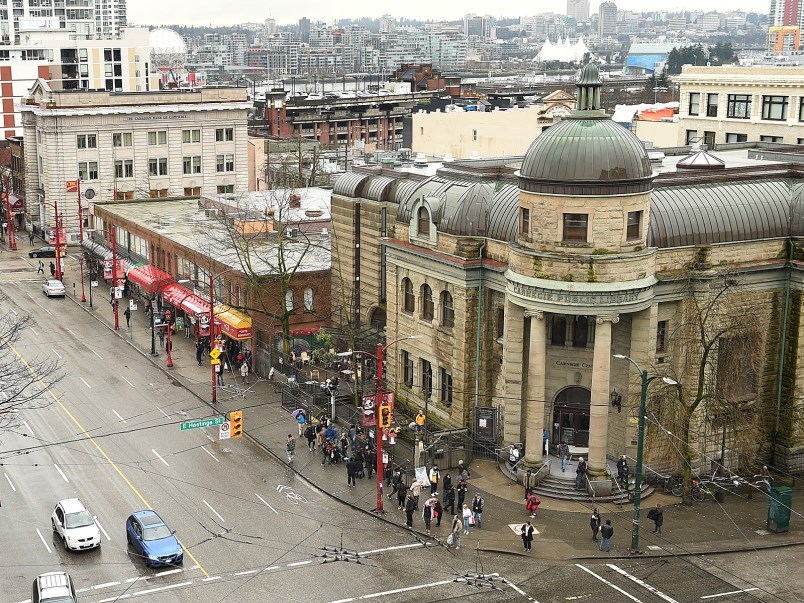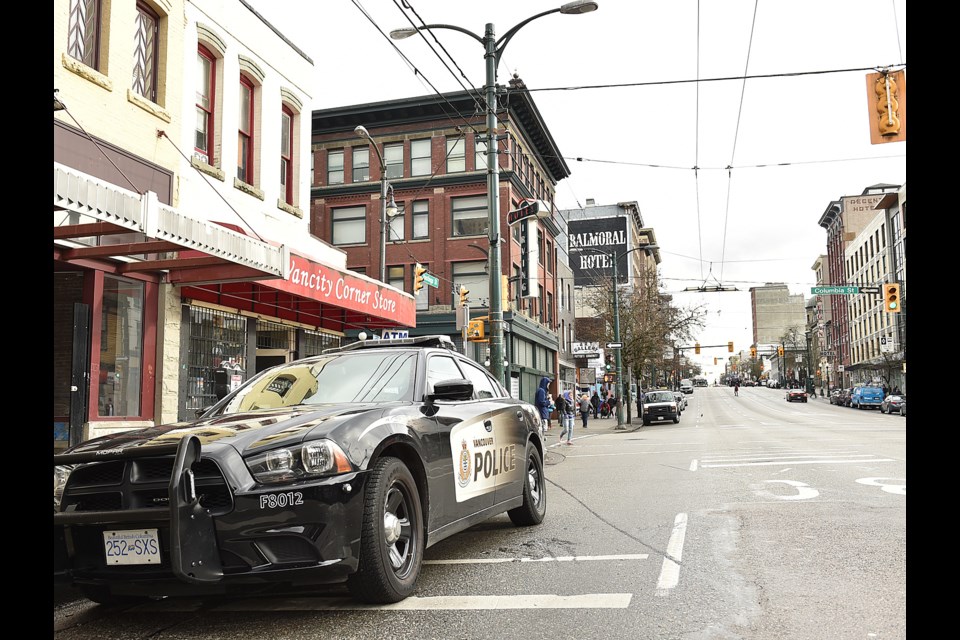You may have heard that Â鶹´«Ă˝Ół»police are in the Downtown Eastside to “proactively address issues around street disorder and prevent violence.”
In other words, battling drug dealing and the mayhem that comes with it.
Unfortunately, for irony purposes, that announcement was made two days prior to Groundhog Day, which was the title of the classic 1993 movie starring Bill Murray, who plays a weatherman who inexplicably lives the same day over and over.
The Downtown Eastside is its own movie.
And every few years, it gets a remake.
New characters appear, but the plot remains the same: Community grapples with poverty, politicians promise to address said poverty, businesses complain of public disorder, cops step up enforcement, the open drug market persists, people die horrible deaths (drug overdose, violence, illness) and reporters write stories.
The characters I referred to are many, including anti-poverty advocates, heads of business associations, health experts, Indigenous leaders, presidents of drug users’ groups, high-ranking cops, various community groups and politicians — lots of them.
Let me introduce you to three.
First up, Larry Campbell, who was Vancouver’s mayor from 2002 to 2005.
Let me begin with a quote.
“If we do our work well, we should be able to eliminate the open drug market on the Downtown Eastside by the next election.”
Campbell made that ambitious statement in his inauguration speech in December 2002. Three years later, when I had a lot more gas in the tank, I typed up Campbell’s statement and brought it with me as I interviewed 30 people who lived, worked — or both — in the Downtown Eastside.
People who spoke to me were drug users, recovering alcoholics, single moms on welfare, information technology professionals, nonprofit operators, the former owner of Save-On-Meats and merchants in Gastown, Chinatown and along East Hastings.
I still have the questionnaire and answers.
My findings: Twenty eight of the respondents were emphatic the visible selling and use of drugs continued in the Downtown Eastside. In fact, the majority said the open drug market remained the same as it did when Campbell took office. Some claimed it was worse and simply pushed from one street to another.
Then along came Sam Sullivan, who was mayor from 2005 to 2008. He launched a grand plan to reduce homelessness, aggressive panhandling and the open drug market by 50 per cent by 2010. He called it “project civil city.” How did that go?
Here’s a snippet from a Â鶹´«Ă˝Ół»Police Department year-end report from 2009.
“Project civil city has been slow to achieve results,” the report said.
I give you that history to discuss the present.

Mayor Gregor Robertson, who promised to end so-called street homelessness by 2015, has been in charge at city hall since 2008. For those of you counting, that will be 10 years in office when voters go to the polls in October to elect a new mayor and council.
So what has Robertson done to address the open drug market, poverty and public disorder in the Downtown Eastside?
He could probably argue there’s more social housing, more shelters, more services for drug users, more monitoring and enforcement of problem landlords, more businesses opened and more outreach teams helping homeless people.
What there’s not more of – as his predecessors have argued — is involvement from the provincial and federal governments. That appears to be changing, with a recent announcement from Premier John Horgan’s government that $83 million will be spent on four “affordable rental housing” projects in the Downtown Eastside.
Back in July, Horgan’s government also raised income assistance and disability rates by $100. Then in November, Prime Minister Justin Trudeau’s government announced a $40-billion, 10-year national housing strategy that aims to reduce chronic homelessness by 50 per cent in Canada.
All that sounds promising.
But so did the four pillars drug strategy (adopted by city council May 2001) and the Â鶹´«Ă˝Ół»Agreement, the three-level government plan signed in March 2000 “to support local community solutions to economic, social, health and safety issues.” Along the way, the VPD created a beat enforcement team, conducted ticketing blitzes and ran project after project to stem the flow of drugs.Â
This is where we are today.
“In recent months, there has been a significant increase in street disorder, including violent altercations, which has led to heightened concerns from the elderly, people with mobility issues and businesses,” Sgt. Jason Robillard, a VPD media liaison officer, told reporters Jan. 30. “We are working with the community to try and make the neighbourhood safe for everyone. Police have noted a considerable spike in street disorder in recent months and vulnerable people are being taken advantage of by others coming in from outside of Â鶹´«Ă˝Ół»to commit crimes, like drug dealing and selling stolen goods.”
Poverty, as various city reports over the years have detailed, is at the root of all this.
The opioid crisis, although tragic, is but a sideshow to the deep-seeded mental health and addiction challenges that have permeated the community for decades. Crime, unfortunately, is a fact of life. And police have to police, despite how the courts may or may not proceed on a file.
Downtown Eastside residents from all walks of life, as I heard back in 2005 and I hear today, want and deserve better, on so many levels. Here’s what Haedy Mason, an unemployed 43-year-old mother of three children living in a housing co-op on East Pender in Chinatown, told me in 2005.
“We’re fed up with this community being a dumping ground and nobody caring about us down here. Is it ever going to get better? The answer for me is that it’s not going to get better until there’s political will to make it better.”
The municipal election is in October. The city will get a new mayor, a new character in a movie that no matter how many times it has been remade, the plot has remained the same: hackneyed, predictable and tiresome.
So to the question: Will Vancouver’s next leader vary from the script?
Look for an answer in political theatres sometime after election day.
@Howellings



